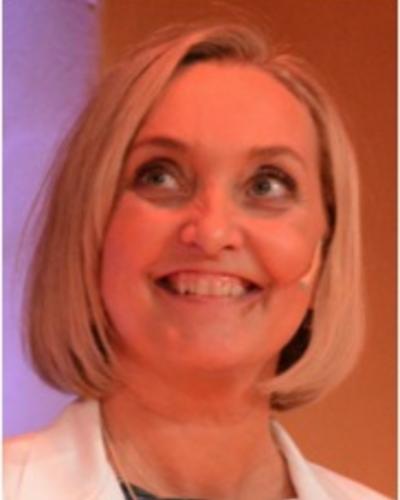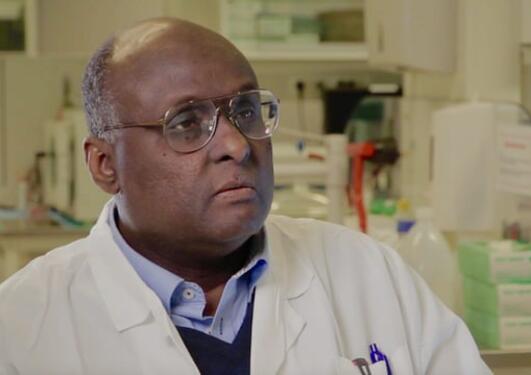Towards a new future within tissue regenerative medicine
Based on a long-standing collaboration between University of Bergen and Haukeland University Hospital, Kamal Mustafa, Cecilie Gjerde and the team of Tissue Engineering Research Group in the project SFI PRIME want to change the way we repair damaged tissues, using stem cells to make new bones and skin.

Main content
"There are a lot of incurable diseases and injuries, that we can’t solve with the available treatments", says Prof. Kamal Mustafa at the Department of Clinical Dentistry, University of Bergen.
He is talking about injuries, diseases and aging that damage tissues, such as bone and skin, beyond repair. The available treatment today for loss of these tissues are bone or skin grafts; however, the transplant treatment is both complicated and invasive. In most cases, bone or skin tissues are taken from another part of the body of the patients, leaving both scars and a high risk of infections.
That’s why researchers now are looking to find better ways of regenerating the tissues. Big leaps have been made in the so-called regenerative medicine discipline, where tissue is made using the patient’s own stem cells:
"Regenerative medicine is very a ’promising approach’ now", Mustafa confirms.
Their own clinical trials on this have also been very promising:
"We have already been successful in making new bone from stems cells at the University Dental Clinic in collaboration with the hospital. The clinicians at the Norwegian National Burn Center at Haukeland University Hospital are working with burn victims have also identified that this concept is interesting to test and develop for their patients", says the professor.
Making tissue from stem cells
The idea behind the new treatment is to regenerate human tissues through printing stem cells, using bioprinting technology.
First, they make a "copy" of the tissue missing using 3D-technology. This "scaffold" is made of biomaterial that either contains the patient’s own stem cells or the stem cells are added to the biomaterial afterwards, and voila – new custom-made tissue appears.
He has now applied for an SFI to develop this type of treatment further.
The hope is to make a new treatment, that is ready for use also for clinicians all over the world, saving time, money and that also reduces the stress for the patients:
"This will also make treatment available to more patients than today as patients will have more successful treatment with less hospital time pr patient", says Mustafa.
Using stem cells from donors
In the trials they have done until now, they have used stem cells from the patients themselves.
Using stem cells from the patients is, however, both time consuming and expensive.
Mustafa and his team want to create a biobank that contains stem cells from donors that are more easily ready to be used to re-build the tissue.
The first hurdle to overcome is to prove that the donor stem cells can be used, without the patient’s immune system rejecting the tissue:
"There are some preclinical trials that have shown that this is feasible. Theoretically, we know that it is possible, but we need to prove it", Mustafa explains.
In stage 1 of the clinical trial phase, they will test this out with a limited number of patients. During the next years they hope to extend this and recruit more patients. In stage 2 they will include more patients, and in the end point the clinical units at University of Bergen and hospitals in Norway will be able to use this as regular clinical practice.
"In 8 years, this practice may be integrated in the clinics in all health regions in Norway"
One other big challenge is finding the optimal biomaterial for each type of tissue engineering.
To make all this happen, they need to collaborate closely with the industry and other partners. He has already established a consortium:
"A European Biobank in Germany will be made available to support the establishment of the Norwegian National stem cell biobank. This activity will be led by University of Bergen and Helse Bergen and the proposed SFI will support the research partners contribution to quality control the biobank so it can be used for stem cell manufacturing at Haukeland University Hospital", says Mustafa.
With the support of world leading international companies, the company OceanTuniCell in Norway has agreed to participate in the development of the optimal scaffolding biomaterials, that will afterwards be tested in the clinical trials.
If everything works according to plan, this will revolutionize this field of medicine, Mustafa believes:
"In 8 years, this practice will be integrated in the clinics in all health regions in Norway with Haukeland University Hospital acting as national centre and factory for stem cells through the national biobank".

The Tissue Engineering research group and the team behind the SFI application. Kamal Mustafa and Cecilie Gjerde in the front.

